Up in the northern Médoc, around the village of Saint Christoly, it was normal, right up to the 1970s, for farmers to have some maize, some cows, a few pigs – and 4 hectares or so of vines. Part of what is now Clos Manou was a 4 hectare ‘Cru Bourgeois’ called Château Cantegrive. Yet this is a very well-placed vineyard, with banks of gravel right on the river, just like the more prestigious appellations to the south. Perhaps when they were gaining their fame, Saint Christoly was just a bit too far out in the boondocks.
The Clos Manou vineyard has been built up by Stéphane Dief and his wife Françoise over many years. Starting with 12 ‘ares’ (0.12 of a hectare), he now has 18.5 ha in production. He has only bought vines planted at 10,000 per hectare, which is double the norm this far north. His purchases include a parcel with the oldest vines in the Médoc, planted in 1850. The vineyard is fairly evenly divided between sandy gravel, clay-limestone, and gravel with clay beneath – the latter being the same as Saint Estèphe to the south. It is made up of 45% Cabernet Sauvignon, 40% Merlot, 6% Cabernet Franc and 4% Petit Verdot.
Stéphane Dief of Clos Manou with one of his 1850s vines
Stéphane gradually converts his vineyards as he takes them over, only gradually withdrawing the fertiliser they have got used to for fear of killing off the vines, but eventually getting to a point where they are cultivated organically, and encouraging the roots to go deep rather than lying on the surface waiting to be fed. The vines that are ‘in conversion’ make the second wine, ‘Petit Manou’.
Much of the work is painstaking and manual – the Diefs employ twelve people during May June and July in the vines. De-leafing is done manually, as is the sorting of the fruit on the vines to ensure a crop which ripens evenly. This was especially important in 2012 because the flowering was disturbed by rain and cold weather, so some of the grapes were a month behind those that were fertilised first.
This work continues up to and during the harvest. You can watch a video of the harvest work at Clos Manou here – a video made by the Clos Manou team during the 2011 harvest:
On arrival at the chai, the grapes are sorted (those for the Clos Manou being de-stemmed by hand) and put into the wooden vats, cooled to 8 degrees using dry ice, so as to have a pre-fermentation maceration which extracts softly, followed by a cool fermentation at 25-26 degrees. The extraction is done by three ‘pigeages’ a day during the fermentation, punching down the floating cap of skins in the Burgundian style. Stéphane is looking for wines with volume which are also tender from the outset.
Stéphane Dief with his wooden fermenting vats used for Clos Manou
The wines tasted show so little sign of oakiness that it comes as a real surprise to find that Stéphane uses 100% new wood. His attention to detail shows again when he talks about the barrels – all French wood, not toasted, they are merely ‘hazelnut’ colour inside, and he buys from eight different coopers.
Françoise & Stéphane in the immaculate barrel cellar for Clos Manou
Going out and visiting the vineyard, seeing the roses planted at the ends of the rows, really does give the impression of a vineyard cultivated like a garden, or like a Cru Classé from the big name appellations to the south.
The current label of Clos Manou features a picture that hangs in their tasting room, of an Elephant making a colossal effort to achieve a very small result – the knocking down of the bottle. The Diefs know you have to make a big effort to achieve quite small increments in qualitaty – but they still believe it is worth it.
Click here for the 2012 CLOS MANOU
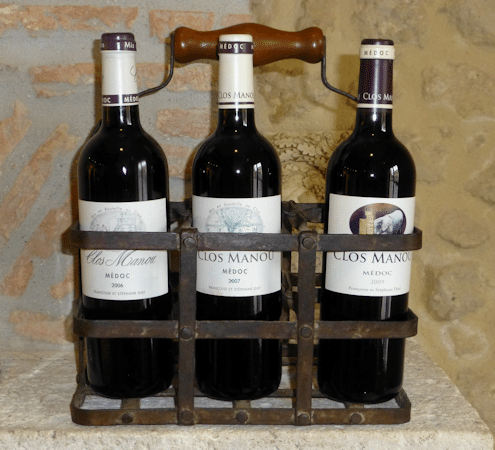
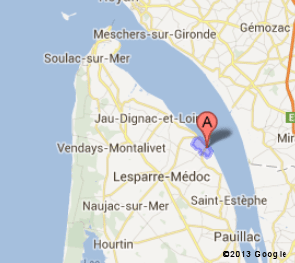
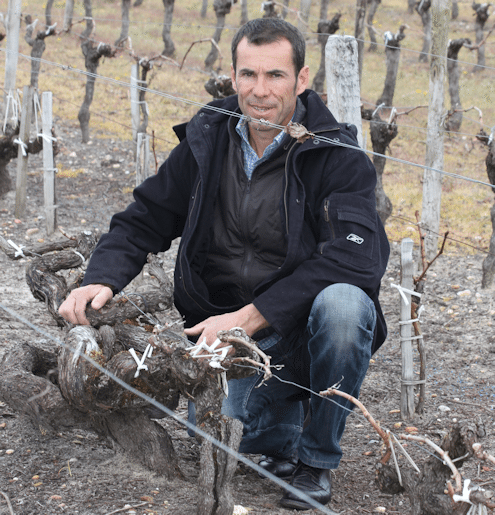
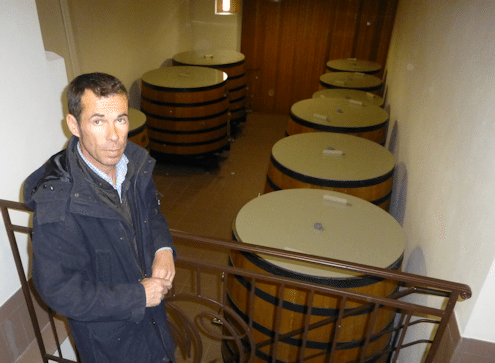
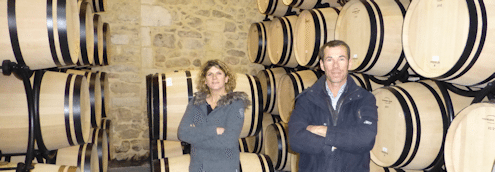
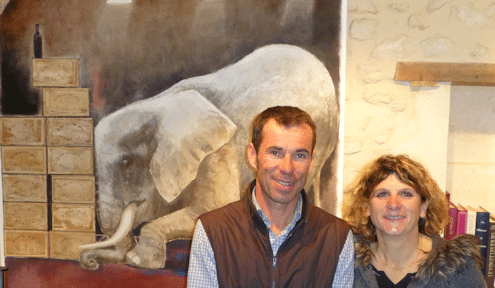
Pingback: 2012 Bordeaux – a last honk of the horn – real value buys | Lea & Sandeman